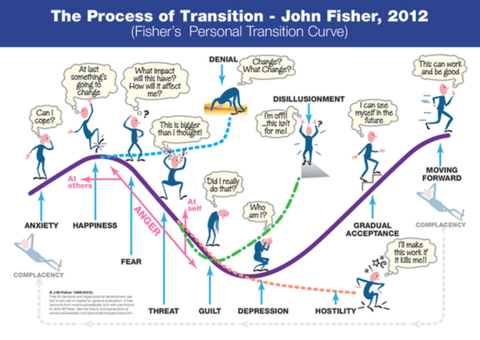Change is an inevitable part of life, and how we handle change can significantly impact our well-being and success. While there are people who seem to sail through significant upheaval unscathed, most of us find it more challenging to adapt to change.
John Fisher's Personal Transition Curve provides comprehensive insight into the emotional journey of change. By recognizing these stages, we can better navigate our personal transitions and support others through theirs.

Strategies for Navigating Change
Understanding the stages of Fisher's Personal Transition Curve can help individuals and organizations manage change more effectively. Here are some strategies to consider:
- Acknowledge Emotions: Recognize and validate your feelings at each stage. It's normal to experience a range of emotions during times of change.
- Use a Combination of Problem-based and Emotional-based coping strategies: Problem-based coping strategies are the practical steps that you take to manage the problem. Emotion-based coping strategies are the tools you will use to manage your emotions when you become stressed.
- Seek Support: Take the time to learn about the resources available across the University. Lean on friends, family, or professional counselors to provide emotional support and guidance. (See a list of resources below)
- Communicate: Openly communicate with others about your concerns and experiences. Transparency can build trust and foster collaborative problem-solving.
- Stay Flexible: Be willing to adjust your plans and expectations as new information and experiences emerge.
- Adopt a Growth Mindset: A growth mindset, as conceived by Stanford psychologist Carol Dweck and colleagues, is the belief that a person's capacities and talents can be improved over time. In essence, it is a belief that discomfort is part of the growth process and with time and resources you can develop what is needed to navigate the situation.
- Focus on Self-Care: Prioritize your well-being by maintaining healthy habits, such as regular exercise, proper nutrition, and adequate rest.
Know When and Where to Reach-out for Support
Managing change also means knowing when and where to seek assistance, preferably before the situation becomes critical. Above are some additional resources you may find helpful.
Do you have an idea for a wellness article? Contact the Community Wellness Team